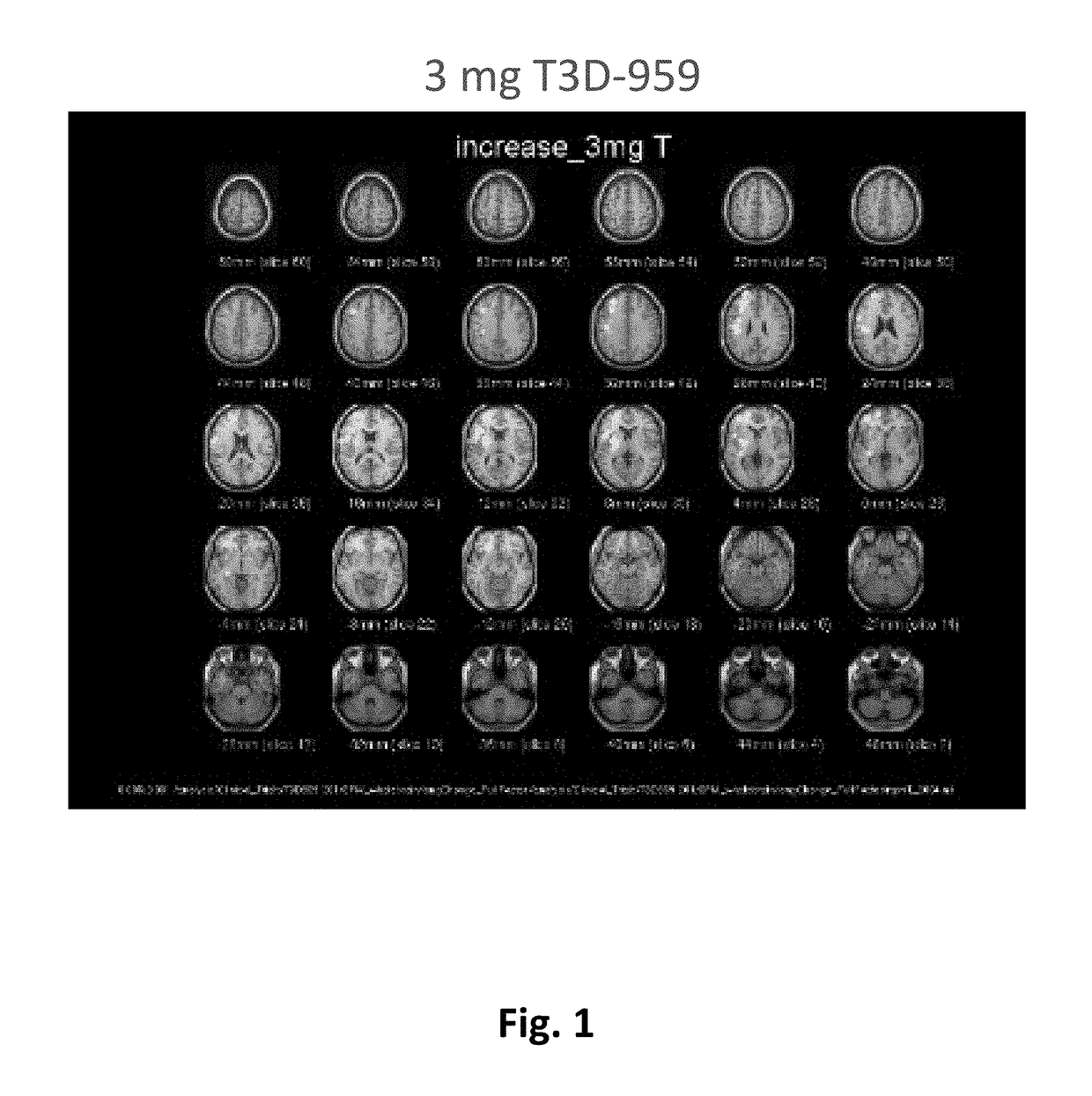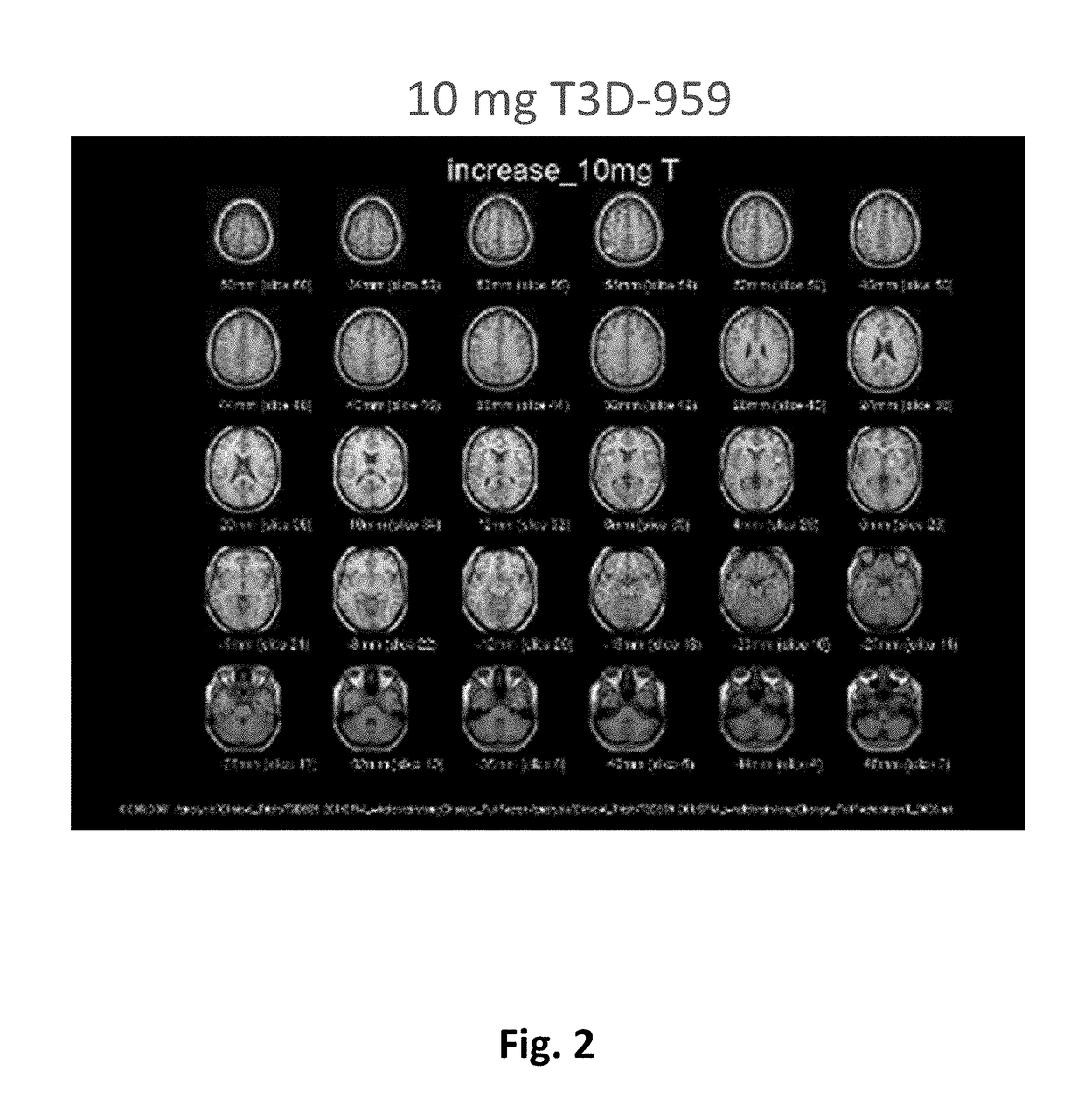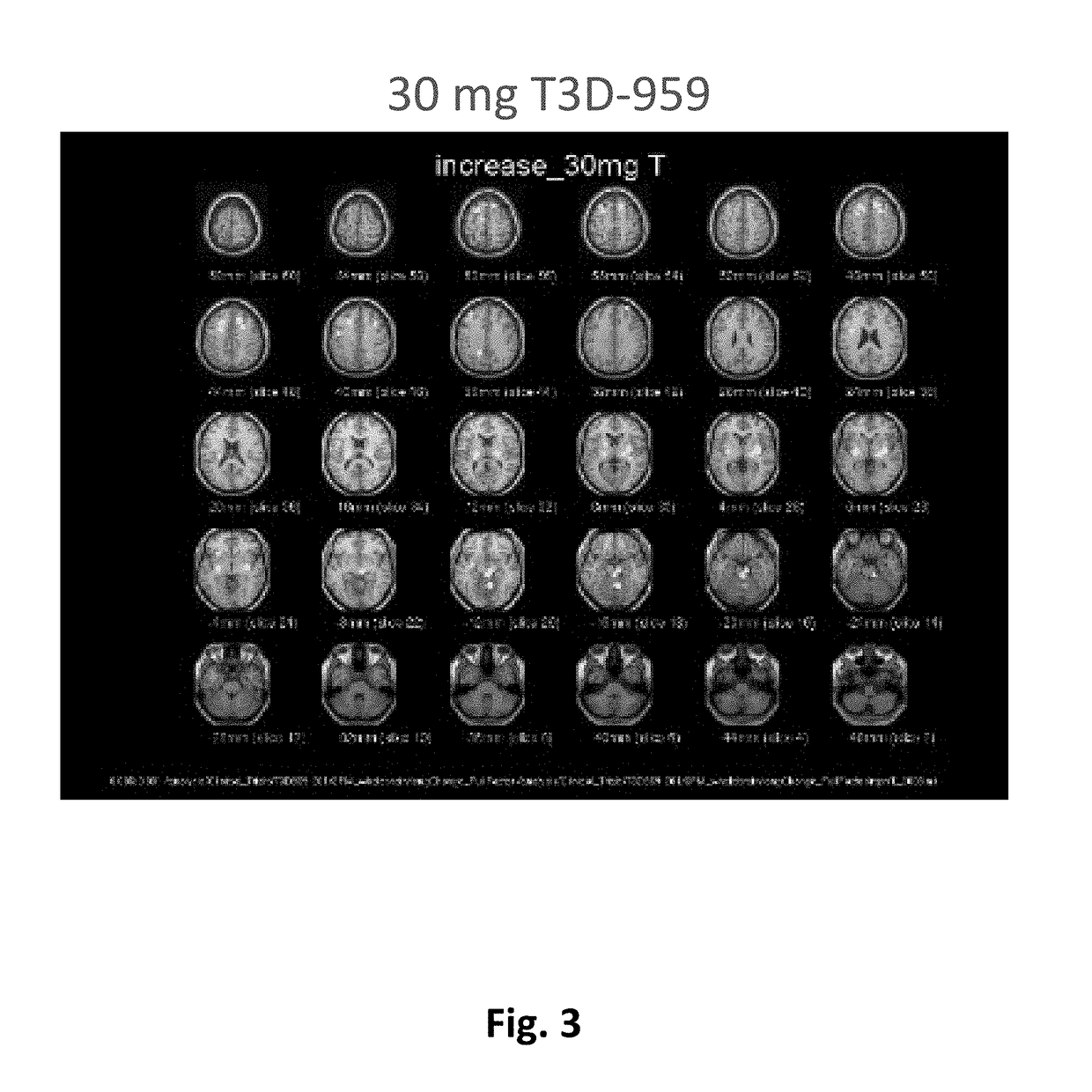Methods of treating neurodegenerative diseases using indane acetic acid derivatives which penetrate the blood brain barrier
a technology of indane acetic acid and brain barrier, which is applied in the direction of capsule delivery, drug composition, nervous disorder, etc., can solve the problems of unstudied dual or triple ppar isoform agonists, unfavorable systemic measures of disease such as serum triglycerides, and inability to treat brain diseases
- Summary
- Abstract
- Description
- Claims
- Application Information
AI Technical Summary
Benefits of technology
Problems solved by technology
Method used
Image
Examples
example 1
Ethyl [(1S)-5-hydroxy-2,3-dihydro-1H-inden-1-yl]acetate
[0223]
[0224]Prepared in six steps from 5-methoxy indanone as described in US68283335.
example 2
2-[5-ethyl-2-(4-methoxyphenyl)-1,3-oxazol-4-yl]ethanol
[0225]
[0226]Prepared from L-aspartic acid β-methyl ester hydrochloride, 4-methoxy benzoyl chloride and proprionic anhydride as generally described in US68283335.
example 3
2-[2-(4-methoxyphenyl)-5-methyl-1,3-oxazol-4-yl]ethanol
[0227]
[0228]Prepared from L-aspartic acid β-methyl ester hydrochloride, 4-methoxy benzoyl chloride and acetic anhydride as generally described in US68283335.
PUM
| Property | Measurement | Unit |
|---|---|---|
| temperature | aaaaa | aaaaa |
| temperature | aaaaa | aaaaa |
| temperature | aaaaa | aaaaa |
Abstract
Description
Claims
Application Information
 Login to View More
Login to View More - R&D
- Intellectual Property
- Life Sciences
- Materials
- Tech Scout
- Unparalleled Data Quality
- Higher Quality Content
- 60% Fewer Hallucinations
Browse by: Latest US Patents, China's latest patents, Technical Efficacy Thesaurus, Application Domain, Technology Topic, Popular Technical Reports.
© 2025 PatSnap. All rights reserved.Legal|Privacy policy|Modern Slavery Act Transparency Statement|Sitemap|About US| Contact US: help@patsnap.com



